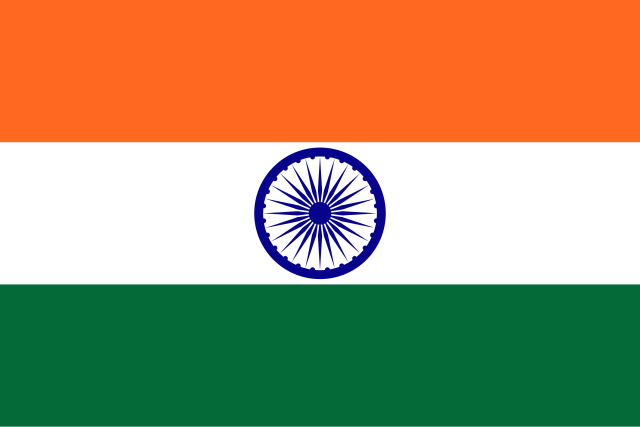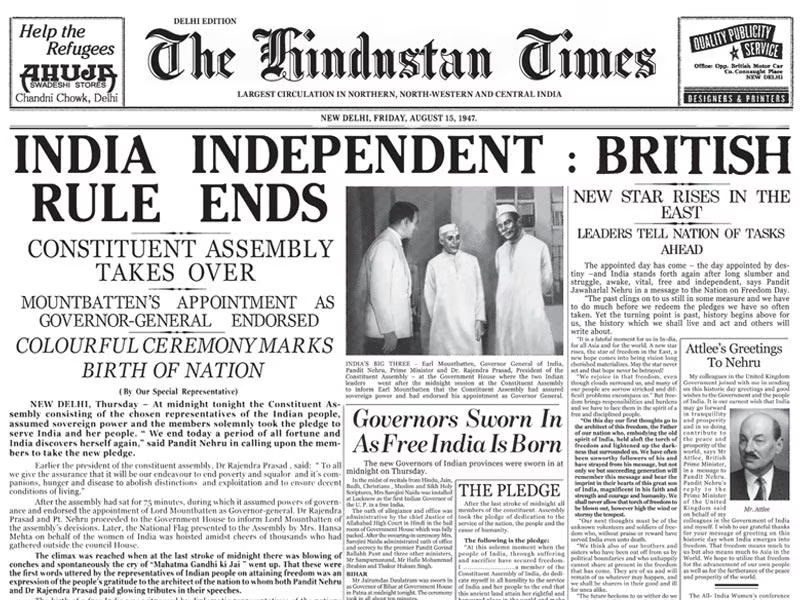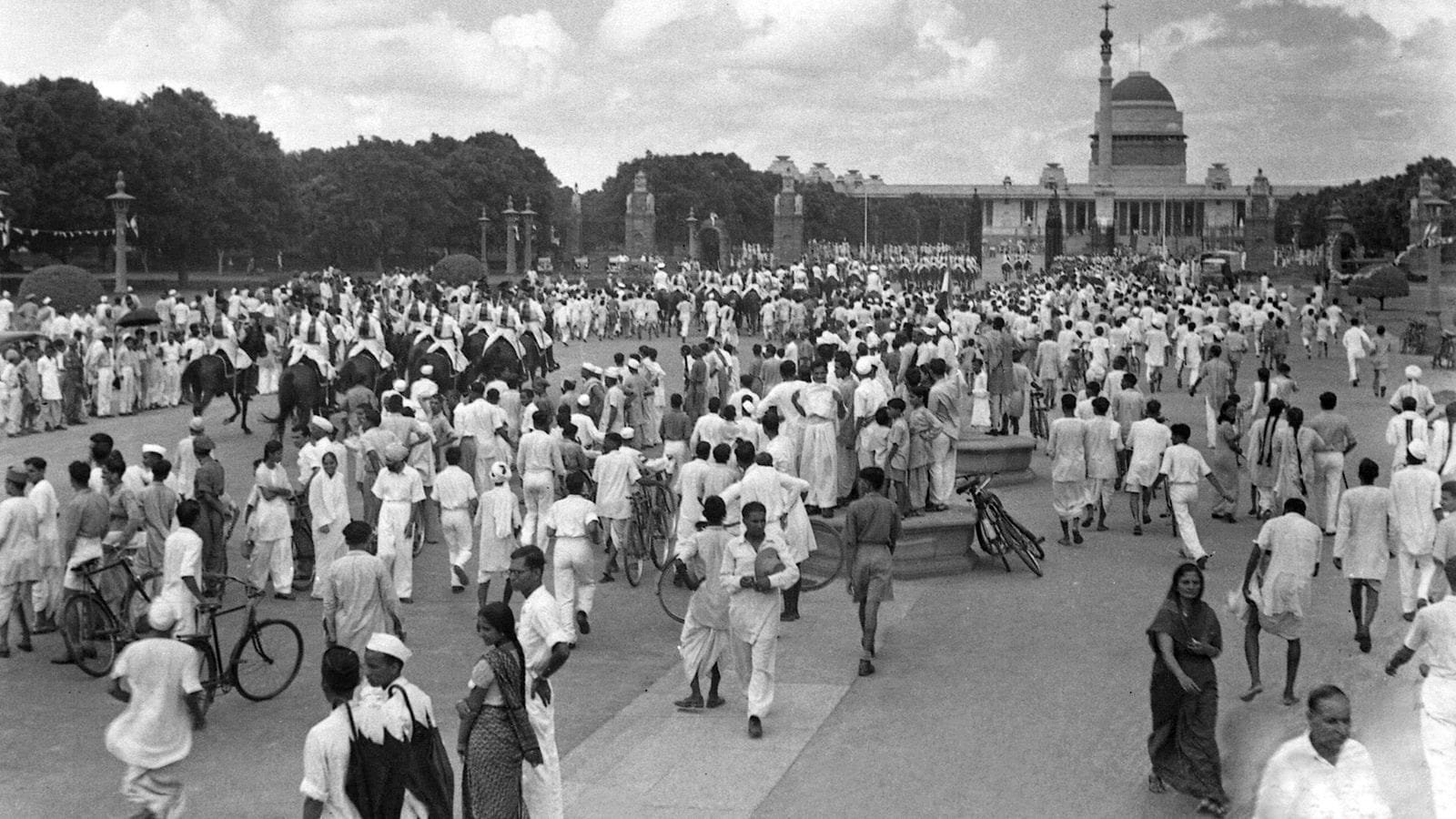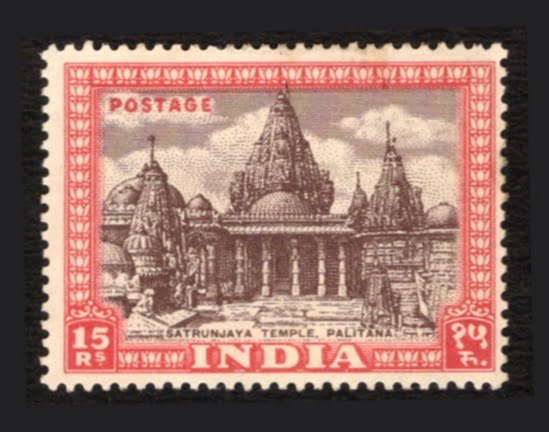The Republic of India
The Republic of India
1947- ∞
India, officially the Republic of India, is a country in South Asia. It is the seventh-largest country by area; the most populous country since 2023; and, since its independence in 1947, the world’s most populous democracy.
Independence
India’s independence on 15th August 1947 marked the end of nearly two centuries of British colonial rule. It was a moment of immense pride and joy, born from the struggles and sacrifices of countless freedom fighters, from Mahatma Gandhi’s philosophy of non-violence to Subhas Chandra Bose’s militant nationalism. But independence was not just the beginning of freedom—it was also the beginning of a complex and often painful journey of nation-building.
At the time of independence, India was a newly born nation riddled with challenges. The country had been partitioned into India and Pakistan, leading to large-scale communal violence and one of the largest human migrations in history. Millions were displaced, and over a million lost their lives. The economy was weak, infrastructure was underdeveloped, literacy was low, and poverty was rampant.
Politically, India had to integrate over 500 princely states into the Union. Under the leadership of Sardar Vallabhbhai Patel, this was achieved largely through diplomacy and a few military actions. The Constitution of India, adopted in 1950, laid the foundation for a democratic, secular, and socialist republic, emphasising justice, liberty, equality, and fraternity.
New Star rises in the East
India Independent: British Rule Ends. Headlines in Hindustan Times on 15th August 1947.
The Pains of Partition
Indian independence and partition in 1947 marked both a historic triumph and a profound tragedy. After nearly 200 years of British colonial rule, India achieved freedom on 15th August 1947, following a long and determined struggle for independence. However, freedom came with the painful decision to divide British India into two separate nations—India and Pakistan—on religious lines. The partition triggered one of the largest and bloodiest migrations in history, with over 15 million people displaced and more than a million lives lost in communal violence. Families were torn apart, cities like Lahore, Amritsar, and Delhi became battlegrounds of identity, and deep scars were left on both nations. While independence brought sovereignty, the partition remains a sombre chapter in the subcontinent’s history.
The scars of partition refused to heal in the decades that followed. Today, India and Pakistan remain bitter neighbours and have fought many wars. The fact that they share a common geographical entity, history, and cultural identity has all but been forgotten.
The Republic
The Republic of India was officially established on 26th January 1950, when the Constitution of India came into effect, replacing the Government of India Act of 1935 as the country’s governing document. Although India had gained independence from British rule on 15th August 1947, it remained a dominion under the British Crown until the adoption of the new constitution. The Constituent Assembly, chaired by Dr. B.R. Ambedkar, spent nearly three years drafting the Constitution, which laid the foundation for a sovereign, socialist, secular, and democratic republic. With this, India became a republic, with an elected President as Head of State, signalling a complete break from colonial rule and embracing the principles of justice, liberty, equality, and fraternity for all its citizens. The date 26th January was chosen to honour the 1930 Declaration of Purna Swaraj (Absolute Independence) made by the Indian National Congress.
Liberalisation
The liberalisation of the Indian economy began in 1991 as a response to a severe economic crisis marked by rising inflation, low foreign exchange reserves, and a looming balance of payments default. Under the leadership of Prime Minister P.V. Narasimha Rao and Finance Minister Dr. Manmohan Singh, India introduced a series of sweeping economic reforms that shifted the country from a socialist-inspired, state-controlled economy to a more market-oriented model. Key measures included reducing import tariffs, dismantling the Licence Raj, privatising public sector enterprises, and welcoming foreign direct investment (FDI). These reforms unleashed a period of rapid economic growth, expanded the private sector, and integrated India more deeply into the global economy. Liberalisation transformed India into one of the world’s fastest-growing economies, though it also brought challenges like widening income inequality and uneven development.
Stamps of Independent India
At independence, India inherited a well-organised but British-imperial postal system. The Indian Post Office Act of 1898 remained in force and provided the legal framework for the postal services. The first stamps of independent India were issued on 15 August 1947, bearing the image of the Indian flag and the word “INDIA POSTAGE.” These marked the transition from colonial imagery to national symbolism.
Republic
India became a republic on 26 January 1950, and soon after, the words “INDIA POSTAGE” were replaced by just “INDIA” on postage stamps. The early stamp issues of independent India featured themes of nation-building, development, and cultural heritage, including agriculture, industry, science, and famous leaders. Key changes during this period were the integration of the princely states’ postal system, the introduction of commemorative stamps to mark events, people and anniversaries, and the establishment of the Philatelic Bureau to promote stamp collection.
Anna Series
The Anna Series stamps were the first postage stamps issued by independent India, and they played a significant role in establishing a national identity through philately after the end of British rule.
The stamps were issued between 1948 and 1954. The denomination was based on the then-prevalent currency system of annas and pies, where 1 Rupee was equal to 16 annas and 192 pies. The Anna series stamps were predominantly definitive, focused on themes that would reflect the nation’s heritage, culture, economy, and aspirations. Their designs were simple, functional, and symbolically rich, showing India’s commitment to self-reliance, progress, and unity.
The Post Office Act of India
Independent India continued with the 1898 Postal Act for many decades, but the changing nature of communication, technology, and delivery services has made reform essential. The proposed Post Office Bill 2023 represents a step toward bringing India’s postal legislation in line with 21st-century realities, aiming to empower India Post while ensuring efficiency, transparency, and security in service delivery.
The Mourning Stamps
The government of India planned to issue a set of stamps on Mahatma Gandhi’s 80th birthday on 2nd October 1949, as a mark of gratitude for his contribution towards the freedom struggle of India. Preparations were underway, and the Indian Security Press (ISP) in Nashik was tasked with preparing designs depicting memorable events in Gandhi’s life. However, the tragic assassination of Mahatma Gandhi on 30th January 1948 disrupted the plans.
While ISP was asked to prepare designs for two mourning stamps, negotiations were also underway with Austrian and Swiss Printers. The Swiss firm Helio Courvoisier finally won the contract, citing ISP’s lack of photogravure technology. Hence, the memorial stamps on a champion of Swadeshi were printed in a foreign country.
Photographs for the stamps were submitted from the archives of Rajkumari Amrit Kaur and LIFE magazine, but the final selection came from the private collection of Kanu Gandhi, Mahatma’s grandson. A total of 4 stamps were published in denominations of 1½ A, 3½ A, 12A, and 10 ₹, and finally released on 15th August 1948 in India, Washington DC, London, Nepal, and Pondicherry.
First Regular Issue – Archaeological Series
The first issue of Definitive Stamps in Independent India came in 1949, also known as the Archaeological Series. It was meant to act as a messenger of the rich historical and cultural heritage of the nascent independent dominion and showcased different motifs and architectural marvels of India, including Hindu, Muslim, Sikh and Buddhist temples of importance, other sculptures and fortresses.
The stamps were first issued on 15th August 1949 and continued to be printed till 1952. These stamps are highly respected in Indian philately, and the higher value ones like the Qutb Minar and Satrunjaya Temple command significant monetary value.
The India Collection
1944-1960
Azad Hind
Azad Hind, also known as the Provisional Government of Free India, was a short-lived government established in Singapore in 1943 by Netaji Subhas Chandra Bose.
1947
The first postal stamps of India were issued in 1947. The first postage stamp of India bore the colours of the Indian Tricolour. It was published three months after independence, on 21st November 1947. The stamp carried the slogan “Jai Hind” in Devanagari on the right top, and the date 15 Aug 1947. After this issue, two more stamps were issued on 15th December 1947, the first being the Ashokan Capital of 1½ Annas, and the second stamp that carried an image of a Douglas DC-4 aircraft.
1948
India planned to issue a set of stamps on Mahatma Gandhi’s 80th birthday on 2nd October 1949 as a mark of gratitude for his contribution towards the freedom struggle of India. However, the tragic assassination of Mahatma Gandhi on 30th January 1948 disrupted the plans. A set of mourning stamps were issued carrying portraits of Mahatma Gandhi.
1949
The first issue of Definitive Stamps in Independent India came in 1949, also known as the Archaeological Series, meant to represent the rich architectural heritage of India. The stamps were first issued on 15th August 1949 and continued to be printed till 1952.
In the same year, India also issued a set of four commemorative stamps to mark the 75th anniversary of the establishment of the Universal Postal Union (U.P.U.). These stamps were part of the British Commonwealth Omnibus Issue on U.P.U..
1950
On 26th January 1950, India became a Sovereign Republic, unveiling its constitution and formally withdrawing from the British Commonwealth. To commemorate this occasion, the Indian Postal authorities issued a set of four stamps celebrating the inauguration of the Republic of India.
1951
The first Asian Games, officially known as the First Asiad, were held from March 4 to March 11, 1951, in New Delhi, India. This marked the inauguration of a major multi-sport event dedicated to athletes across Asia.
In 1951, India celebrated 100 years of the Geological Survey of India, a scientific agency dedicated to conducting geological surveys and studying basic earth sciences in India.
1952
1953
1954
1955
1956
1957
1958
1959
1960
1961-1975
1961
1962
1963
1964
1965
1966
1967
1968
1969
1970
1971
1972
1973
1974
1975
1976-1990
1976
1977
1978
1979
1980
1981
1982
1983
1984
1985
1986
1987
1988
1989
1990
All stamp images and content © PhilatelyLife






